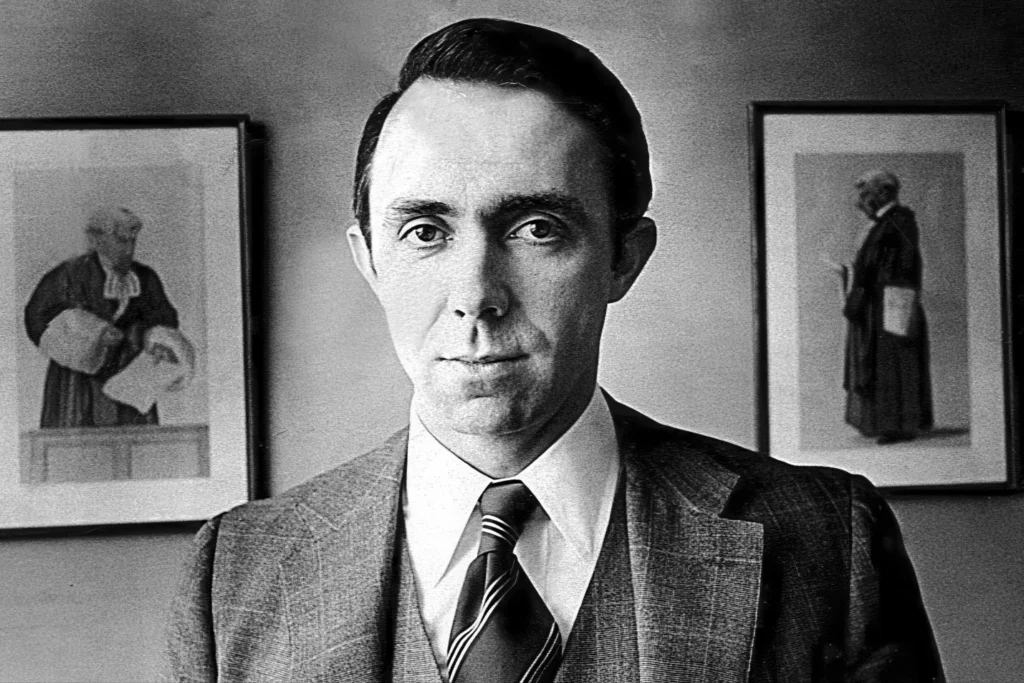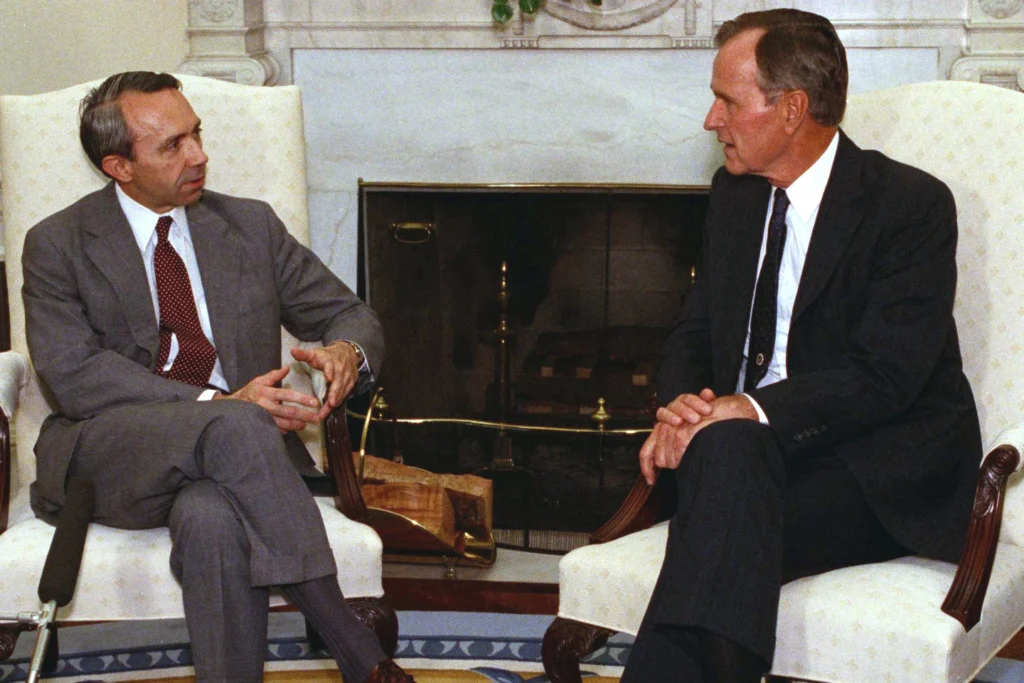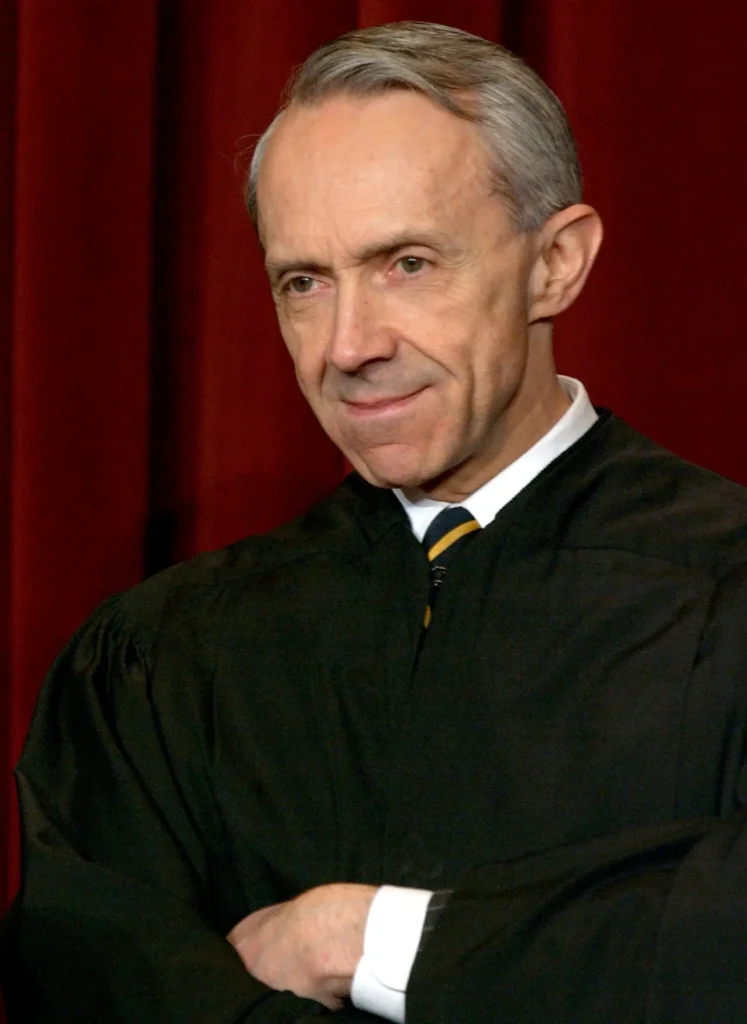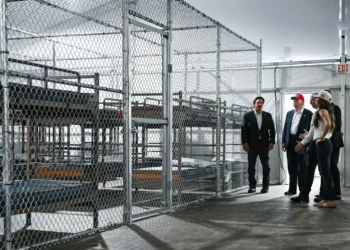Justice David Souter, a Republican-appointed judge who often sided with the liberal wing of the Supreme Court, has passed away at the age of 85.
Born on September 17, 1939, Souter was nominated by President George H.W. Bush in 1990. Despite being appointed by a Republican president, Souter’s judicial philosophy often aligned with the court’s liberal justices.

Souter’s death has sparked tributes from across the legal community, with many praising his commitment to justice and his unique approach to the law.
Key Takeaways
- Justice David Souter died at 85.
- Souter was a Republican-appointed judge who often sided with the court’s liberal wing.
- He was nominated by President George H.W. Bush in 1990.
- Souter’s judicial philosophy was often aligned with the court’s liberal justices.
- His death has sparked tributes from the legal community.





The Life and Early Career of David H. Souter
Justice David H. Souter’s journey to the Supreme Court began with his roots in New Hampshire, where he developed a strong foundation in law and politics. This early influence played a significant role in shaping his future career.
New Hampshire Roots and Education
David H. Souter was born and raised in New Hampshire, a state that significantly influenced his early life and career choices. He graduated magna cum laude from Harvard College, demonstrating his academic prowess from an early stage. Furthermore, Souter’s academic achievements were recognized internationally when he was awarded a Rhodes Scholarship to study at Oxford. Later, he returned to the United States to attend Harvard Law School, further solidifying his legal knowledge.
Some key aspects of his education include:
- Graduation from Harvard College with honors
- Studying at Oxford as a Rhodes Scholar
- Attending Harvard Law School
Early Legal Career and State Judiciary Experience
After completing his education, Souter began his legal career in New Hampshire. He worked in various capacities within the state’s legal system, eventually gaining experience in the state judiciary. His early legal career was marked by a steady progression through the ranks, demonstrating his dedication and legal acumen.
Souter’s experience in the state judiciary was crucial in preparing him for his future role on the Supreme Court. Some of the key aspects of his early legal career include:
- Working in the New Hampshire Attorney General’s office
- Serving as an Associate Justice of the New Hampshire Superior Court
- Being appointed to the New Hampshire Supreme Court
These roles not only honed his legal skills but also provided him with the judicial experience necessary for his later appointment to the Supreme Court.
Souter’s Appointment to the Supreme Court
The Bush administration’s choice for the Supreme Court in 1990 was David Souter, a relatively obscure figure at the time. Souter was nominated by President George H.W. Bush to fill the vacancy left by Justice William Brennan. This nomination was significant as it marked a turning point in Souter’s career, catapulting him from a relatively unknown state judge to a federal Supreme Court Justice.
Selection Process
The Bush administration’s selection process for Souter was thorough, involving a detailed vetting of his judicial record and background. Souter’s experience as a judge in New Hampshire and his service as the state’s attorney general were key factors in his selection. The administration was looking for a candidate with a conservative judicial philosophy, and Souter’s record suggested he would be a reliable conservative vote on the Court.

Senate Confirmation and Initial Expectations
Souter’s Senate confirmation hearings were closely watched, with many questioning his stance on key issues. Despite some concerns, Souter was confirmed by the Senate with a vote of 90-9. Initially, many expected Souter to vote conservatively, aligning with the Bush administration’s expectations. However, his subsequent voting patterns would surprise many, as he began to lean more liberal in his decisions.
| Event | Date | Outcome |
|---|---|---|
| Nominated by President George H.W. Bush | July 23, 1990 | Nomination announced |
| Senate Confirmation Vote | October 2, 1990 | Confirmed 90-9 |
| Sworn in as Supreme Court Justice | October 9, 1990 | Took office |
Justice Souter, Supreme Court Justice Who Defied Conservative Expectations
Justice David Souter’s Supreme Court career was a tale of conservative expectations versus a reality that leaned liberal. When President George H.W. Bush nominated Souter in 1990, many anticipated that he would join the Court’s conservative bloc. However, as Souter began to cast his votes, it became clear that his judicial philosophy was not as predictable as expected.
Early Voting Patterns and Jurisprudence
Initially, Justice Souter’s voting patterns were closely watched by legal scholars and pundits. As he settled into his role, it became apparent that while he was not as conservative as some had expected, he was also not an outright liberal. His early jurisprudence showed a tendency towards moderation, with a focus on the nuances of each case. For instance, in cases involving federalism, Souter demonstrated a willingness to scrutinize the boundaries between federal and state power.
As noted by legal analysts, Souter’s approach was characterized by a commitment to understanding the complexities of the law.
“Souter’s jurisprudence was marked by a careful consideration of the legal issues at hand, often avoiding sweeping pronouncements in favor of more measured decisions.”
This approach allowed him to navigate the complexities of the Court’s decisions, sometimes siding with the conservatives and other times with the liberals.
Shift Toward the Liberal Wing
Over time, Justice Souter’s voting patterns began to shift more decisively towards the liberal wing of the Court. This shift was particularly notable in cases involving abortion rights, where Souter consistently supported the Court’s precedents on the issue. For example, in Planned Parenthood v. Casey (1992), Souter joined the majority in reaffirming the core holding of Roe v. Wade. His votes in such landmark cases contributed to the perception that Souter had become a reliable member of the Court’s liberal bloc.
As Souter continued to serve on the Court, his alignment with the liberal justices became more pronounced, particularly in cases involving civil liberties and constitutional interpretations. This shift was not necessarily a change in his judicial philosophy but rather a reflection of the Court’s evolving dynamics and the issues that came before it.
Key Rulings and Opinions of Justice Souter
Justice David Souter’s tenure on the Supreme Court was marked by several pivotal decisions that showcased his judicial philosophy. His opinions and votes in landmark cases often reflected a nuanced understanding of the Constitution.
Landmark Cases on Abortion Rights
Justice Souter played a crucial role in several significant abortion rights cases. In Planned Parenthood v. Casey (1992), he joined the majority in reaffirming the core holding of Roe v. Wade, demonstrating his commitment to upholding established precedent. This decision highlighted Souter’s approach to balancing individual rights with state interests.
Bush v. Gore Dissent
One of Justice Souter’s most notable dissents came in Bush v. Gore (2000), where he disagreed with the Court’s decision to halt the Florida recount, effectively deciding the presidential election. Souter’s dissent underscored his concerns about the equal protection implications of the Court’s ruling and reflected his skepticism towards the majority’s reasoning.
Civil Liberties and Constitutional Interpretations
Throughout his career, Justice Souter was known for his thoughtful approach to civil liberties and constitutional interpretation. He often sided with the liberal wing of the Court on issues related to individual rights and liberties, demonstrating a commitment to protecting these rights against governmental overreach.
Souter’s jurisprudence was characterized by a careful consideration of the Constitution’s text and history. His opinions frequently reflected a nuanced understanding of the law, balancing competing interests and values.
Souter’s Judicial Philosophy and Legacy
David Souter’s time on the Supreme Court was marked by a distinct judicial philosophy that often put him at odds with his conservative colleagues. As a jurist, Souter was known for his nuanced approach to the law, which was influenced by his experiences as a state judge and his commitment to constitutional interpretation.
Constitutional Interpretation Approach
Justice Souter’s approach to constitutional interpretation was characterized by a deep respect for the document’s original meaning, coupled with an understanding of its application in contemporary society. “The Constitution,” Souter once noted, “is not a static document.” This perspective often aligned him with Justices like John Paul Stevens, who also favored a more adaptive approach to constitutional interpretation. Souter’s methodology was not about imposing personal beliefs but rather about understanding the Constitution’s provisions within the context of modern challenges.
Impact on American Jurisprudence
Souter’s judicial philosophy had a significant impact on American jurisprudence, particularly in areas such as civil liberties and abortion rights. His votes in landmark cases, such as Planned Parenthood v. Casey, underscored his commitment to upholding established precedent, even when it meant diverging from the views of his more conservative colleagues. Comparatively, Souter’s stance on certain issues was more akin to that of Justice Sandra Day O’Connor, with whom he often found common ground, than to some of his other conservative peers. Justice Anthony Kennedy, known for his swing votes, sometimes found himself aligned with Souter on key decisions, highlighting the complex dynamics within the Court during Souter’s tenure.
“The Constitution is not a static document, but one that is living and breathing, adapting to the needs of the society it governs.”
This approach to the Constitution not only defined Souter’s legacy but also contributed to the evolution of American jurisprudence, leaving a lasting impact on the legal landscape.
Retirement from the Supreme Court
After nearly two decades on the bench, Justice David Souter announced his retirement from the Supreme Court in 2009, marking the end of an era for the court.
Decision to Step Down in 2009
Justice Souter’s decision to step down was a significant moment, as it allowed President Barack Obama to nominate a successor. Souter’s nearly 19-year tenure on the Supreme Court had been characterized by his thoughtful jurisprudence and commitment to the law.
Sonia Sotomayor’s Appointment as Successor
The question on everyone’s mind was: Who replaced Souter on the Supreme Court? The answer came when President Obama nominated Sonia Sotomayor to succeed Justice Souter. Sotomayor’s appointment was confirmed by the Senate, making her the first Hispanic justice in U.S. history. Her confirmation hearings were closely watched, and she was ultimately confirmed, bringing a new perspective to the court.
Sotomayor’s background and judicial philosophy were seen as a good fit to continue the legacy of the court’s jurisprudence. Justice Souter’s retirement and Sotomayor’s subsequent appointment marked a significant transition for the Supreme Court, ensuring its continued relevance and evolution.
Life After the Supreme Court
After retiring from the Supreme Court, Justice David Souter returned to his roots in New Hampshire. This marked a significant change from his life in Washington, D.C., where he had spent nearly two decades shaping the country’s legal landscape.
Return to New Hampshire
Souter’s quiet life after retirement was characterized by his return to New Hampshire, a state where he had served as a judge and attorney general before his Supreme Court appointment. He settled back into the state, reconnecting with his community and enjoying the tranquility it offered.
Limited Public Appearances and Privacy
Known for his aversion to the spotlight, Souter maintained a private life, avoiding public appearances and interviews. This was consistent with his personality during his time on the Court, where he was known for being reserved and not seeking to draw attention to himself.
- Rarely gave public talks or speeches
- Avoided media interviews
- Kept a low public profile
Occasional Legal Work and Teaching
Although largely retired from active legal practice, Souter did engage in some occasional legal work and teaching. This allowed him to stay connected to the legal community without having to return to the intense scrutiny of his Supreme Court days.
Some of his activities included:
- Participating in legal seminars
- Engaging in occasional teaching at legal institutions
The Passing of a Judicial Icon: Cause and Circumstances of Death
Justice David Souter, known for his pivotal role on the Supreme Court, passed away at 85, leaving behind a legacy that defies the conservative expectations of his appointment. His death marked the end of an era for a jurist whose impact went beyond his Republican roots.
Final Days and Medical Circumstances
Justice Souter’s final days were spent in relative seclusion, away from the public eye. Cause of death was not publicly disclosed, but it is known that he died at the age of 85. His passing was a significant loss to the legal community, given his profound influence on American jurisprudence.
Tributes and Reactions from Legal Community
The legal community reacted with a mix of sadness and appreciation for Justice Souter’s contributions. Tributes poured in, highlighting his commitment to the law and his unexpected shift towards the liberal wing of the Court. His legacy continues to be a subject of discussion, reflecting on his impact on landmark cases and his role in shaping constitutional interpretations.
Conclusion: The Enduring Impact of Justice David Souter
Justice David Souter’s legacy continues to be felt on the Supreme Court, with his jurisprudence contributing to significant ideological shifts over time. As a GOP-appointed judge who leaned liberal, Souter’s voting patterns and opinions played a crucial role in shaping the Court’s decisions on various landmark cases.
The enduring impact of Souter’s judicial philosophy is evident in the ongoing debates about the Supreme Court’s role in American society. His approach to constitutional interpretation has influenced the Court’s decisions, even after his retirement in 2009. The ideological shifts that occurred during his tenure continue to shape the Court’s jurisprudence, with Souter’s legacy remaining an essential part of Supreme Court history.
Souter’s impact on the Court’s decisions, particularly in cases related to abortion rights, civil liberties, and constitutional interpretations, demonstrates the lasting influence of his judicial philosophy. As the Supreme Court continues to evolve, Souter’s legacy serves as a reminder of the importance of judicial independence and the enduring impact of his contributions to American jurisprudence.
FAQ
Why did David Souter become more liberal during his time on the Supreme Court?
Justice Souter’s shift towards the liberal wing was a surprise to many, as he was appointed by a Republican administration. However, his voting patterns and jurisprudence revealed a more liberal approach to constitutional interpretation.
What were some of David Souter’s most famous cases?
Justice Souter was involved in several landmark cases, including Bush v. Gore and abortion rights cases. His dissent in Bush v. Gore was particularly notable, as it highlighted his disagreement with the court’s decision.
Who replaced David Souter on the Supreme Court?
Sonia Sotomayor was appointed to succeed Justice Souter on the Supreme Court in 2009.
How did David Souter’s judicial philosophy impact American jurisprudence?
Justice Souter’s approach to constitutional interpretation had a significant impact on American jurisprudence, as he brought a unique perspective to the court.
Did David Souter regret retiring from the Supreme Court?
There is no public indication that Justice Souter regretted his decision to retire from the Supreme Court in 2009.
What was David Souter’s life like after retiring from the Supreme Court?
After retiring, Justice Souter returned to New Hampshire and maintained a private life, limiting his public appearances and avoiding the spotlight.
How is David Souter’s death affecting the Supreme Court today?
Justice Souter’s passing has been met with tributes and reactions from the legal community, highlighting his enduring impact on the Supreme Court and American jurisprudence.
What were some of the key votes cast by David Souter during his time on the Supreme Court?
Justice Souter’s key votes included his dissent in Bush v. Gore and his votes in abortion rights cases, which revealed his liberal leanings.
How did David Souter’s background and education shape his judicial philosophy?
Justice Souter’s education at Harvard College, Oxford, and Harvard Law School, as well as his roots in New Hampshire, influenced his approach to law and constitutional interpretation.





















































